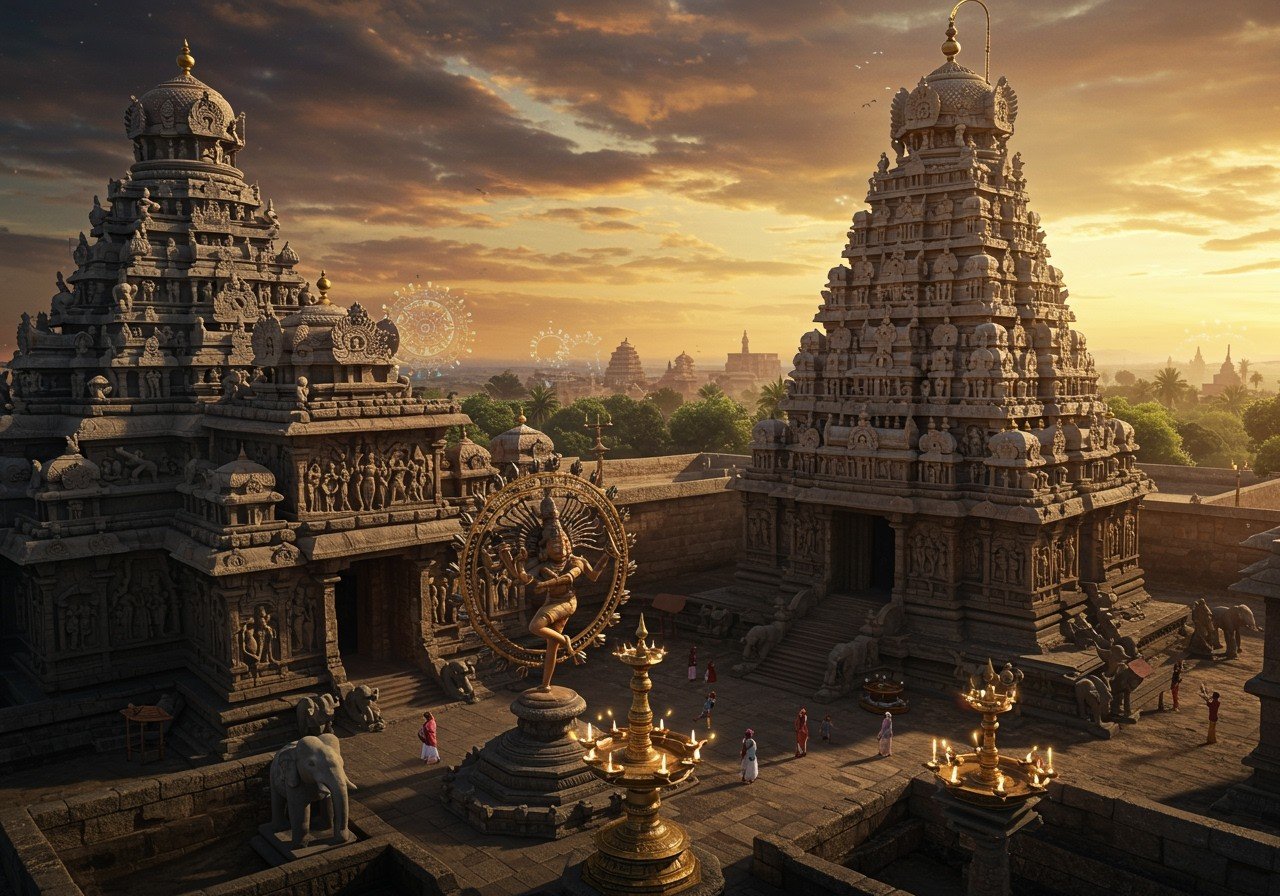
The Chola Dynasty, prominent from around 850 CE to 1250 CE in South India, is renowned for its significant contributions to art, culture, and particularly, architecture. This blog post delves into the majestic architectural style of the Cholas, exploring its unique features, historical context, and the magnificent temples constructed during their reign. We’ll also examine the architectural styles and innovations that distinguish Chola architecture, emphasizing its enduring legacy within Indian culture.
Historical Context of Chola Architecture
To fully appreciate the splendor of Chola architecture, understanding the historical context in which it flourished is crucial. The Chola Empire, with its capital at Thanjavur, stands as one of the longest-ruling dynasties in South Indian history. Known as great patrons of art and architecture, their rule witnessed the construction of countless temples and monuments. These structures served not only religious purposes but also showcased the empire’s wealth, power, and artistic sensibilities. Rulers like Rajaraja Chola I and his successor, Rajendra Chola I, played pivotal roles in the architectural advancements of this era.
Key Features of Chola Architecture
Chola architecture is celebrated for its grandeur, intricate carvings, and innovative designs. Key features include:
- Dravidian Style: Chola temples adhere to the Dravidian architectural style, characterized by pyramid-shaped towers known as vimanas, which dominate the landscape and symbolize the connection between earth and the heavens.
- Use of Granite: The extensive use of granite in temple construction demonstrates the advanced stone-working skills of Chola artisans. The durability of granite ensured that these magnificent structures would withstand the test of time.
- Elaborate Sculptures: Chola temples are adorned with incredibly detailed sculptures depicting various deities, mythical creatures, and scenes from Hindu mythology, creating a visual narrative of religious beliefs and stories.
- Mandapas: These pillared halls served various religious and ceremonial purposes, providing spaces for gatherings, rituals, and artistic performances.
- Gopurams: Towering gateways, known as gopurams, mark the entrance to temple complexes. Often intricately decorated, these structures served as impressive entryways to the sacred spaces within.
- Iconography: The depiction of deities and other figures followed strict iconographic guidelines, ensuring both artistic beauty and religious significance, maintaining the sanctity and symbolic meaning of the figures represented.
- Water Tanks: Many Chola temples incorporated large water tanks or reservoirs used for ritual purification and other purposes, symbolizing the cleansing and renewal associated with religious practices.
Significant Temples of the Chola Dynasty
The Cholas constructed numerous temples, many of which are recognized as UNESCO World Heritage Sites today. Some of the most significant include:
- Brihadeeswarar Temple, Thanjavur: Built by Rajaraja Chola I, this architectural marvel features a massive 66-meter tall vimana and a monolithic Nandi statue. Learn more about Hindu sacred architecture.
- Gangaikonda Cholapuram Temple: Constructed by Rajendra Chola I, this temple is renowned for its grandeur and intricate carvings, showcasing the opulence and artistic skill of the Chola empire.
- Airavatesvara Temple, Darasuram: Known for its exquisite stone carvings and architectural precision, this temple exemplifies the refined craftsmanship of the Chola artisans.
Exploring Dravidian Architecture with Poojn.in
Delving deeper into the Dravidian architectural style of the Chola Dynasty, we can explore several related topics:
- Dravidian Temple Architecture: A Detailed Guide: This resource provides a comprehensive overview of the Dravidian style, its key elements, and its evolution over time.
- Dravidian Temples: A Guide to Their Key Architectural Features: Focuses on the specific architectural elements that define Dravidian temples, such as vimanas, gopurams, and mandapas.
- Dravidian and Nagara Architecture: A Comparison of Styles: Compares and contrasts the Dravidian style with the Nagara style of North India, highlighting their distinct characteristics.
Connecting with Chola Heritage through Poojn.in
Poojn.in offers a range of products that resonate with the spiritual and artistic essence of the Chola Dynasty. For those seeking to create a sacred space inspired by Chola temples, consider these offerings:
- Holy Idols: Poojn.in provides a selection of beautifully crafted idols reminiscent of the deities worshipped in Chola temples.
- Sacred Pooja Asan: Create a dedicated space for worship with a traditional asan (prayer mat).
Conclusion
The architectural marvels of the Chola Dynasty stand as a testament to their artistic vision, engineering prowess, and deep-rooted spirituality. These temples continue to inspire awe and reverence, serving as a tangible link to a rich cultural heritage. By exploring and appreciating Chola architecture, we gain a deeper understanding of India’s artistic and architectural history.


